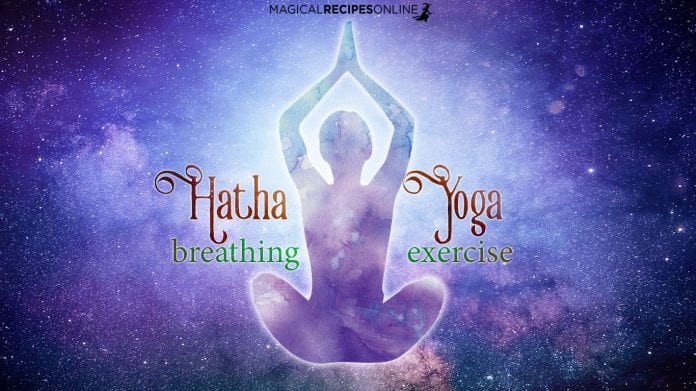All around us and even always inside us there is air. Air is a most vital element of our lives. Not only its spiritual part (for which this site has already some posts such as “Wind Magic: East Wind” and “Elemental Magic of Air: to Raise and Summon a Wind! & an Introduction to Elemental Magic”), but also its physical part. If we stop breathing air we die, and when we are dead we don’t breathe air, therefore air and breathing are powerfully connected with our living.
The quality and the amount of the air we breathe influences the function of all the organs and systems of our body, and the way we breath influence as well as is influenced by the state of our mind. Many philosophies around the word have associated the way of our breathing with the quality of our lives, mental state, health, and even the years of our living. Some believe that it is written by the time of our birth how many breathes we are going to have, and therefore if we take them slowly we will live more.
Hatha Yoga uses air and breathing techniques to achieve too many things, including energizing metabolism, healing different conditions and cause certain states of mind. If one knows all the secrets of breathing then one can cause by choice any state of mind he or she wants. Here I am going to give you two simple Hatha Yoga’s techniques of breathing to achieve two very beneficial mental states. The one will help you to be balanced and the other to help you get more relaxed. The only tools you need are yourself and air to breathe.
But first let me explain the four parts of breathing. The first part is the one of inhalation, the procedure that you take air in your body. For a full inhalation, start filling your abdomen and then come up to the diaphragm and then also fill your lungs.
The second part is the part of pause or keeping the air. During this part you just keep the air inside you.
The third part is the one of expiration. During expiration release the air starting from your abdomen, then the diaphragm and finally your lungs.

The forth part is the one of apnea. During this part you keep your body emptied of air without inhaling or exhaling. I know that if you haven’t ever done breathing exercises this part may seem a little horrifying but it is just a simple and natural part of breathing, although in the following procedure you consciously elongate the time of this phase.
Now, the timing I am going to give you is an example that is quite good for most of inexperienced, but feel free either to raise or shorten the time according to your needs and capabilities avoiding excesses, and keeping the ratio given between the phases of breathing.
Now, to perform a balancing breathing, inhale for 4 seconds, pause for 4 seconds, exhale for 4 seconds and keep apnea for 4 seconds and repeat. Start by taking ten full breaths and according to your experience go up to five minutes of breathing. Also, unless you are VERY experienced do not raise the time of each phase over 5 seconds.
This balancing breathing will help you to overcome unreasonable sleepiness as well as to reduce anxiety. Also it will prepare the mind for magical work, self-hypnosis, meditation and visualization. You can perform this breathing any time of the day, and it is said that this is the best breathing one may have. Some yogis do use these breathing during all day long, but remember that they are practising for many and many years, so do not overdo
To perform relaxing breathing inhale for 4 seconds, pause for 2 seconds, exhale for 8 seconds and keep apnea for 2 seconds and then repeat. Start by taking ten full breaths and according to your experience and needs go up to ten minutes.
This relaxing breathing will help you to relax, relieve anxiety and stress, and prepare you for a nice and restful sleep. It is not suggested for performing it before meditation unless you are in extreme stressful state, but feel free to perform it before sleeping. It is a much easier exercise to perform than the balancing breathing, so you may want to start by this one.
Hatha Yoga has numerous breathing techniques, some of them have similar effects, some quite different ones. From my experience, these two techniques are the most useful techniques for the everyday person.
So do have fun enjoying them!

